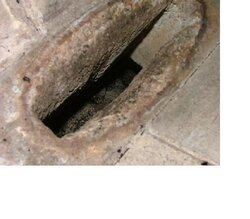I did my spring cleaning yesterday on my EKO 40 after one full winter of burning, I noticed in the upper chamber that around the top lip of the nozzle a substantial amount of erosion has occured and the top edge now has a radius of probably 1" to 2" . It looks quite rounded and I am concerned that after years 2, 3 and 4 the throat will be worn away . What do you guys think about this level of erosion after one year? Do those EKO 40 owners that have burnt for multiple years have more erosion or does it level off after the first year. I was thinking of installing a metal plate with a nozzle cut into it and placed in the bottom of the upper chamber to take the abuse of the erosion. Has anyone addressed this issue.
Thanks
Thanks


